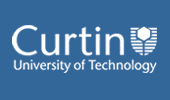Area: | School of Biomedical Science |
Credits: | 25.0 |
Contact Hours: | 6.0 |
Lecture: | 1 x 2 Hours Weekly |
Practical: | 1 x 4 Hours Weekly |
Prerequisite(s): | 302486 (v.2) Molecular Genetics 331 or any previous version
|
Syllabus: | Principles and applications of molecular genetics. Stategies and approaches used to locate and identify genes involved in conferring a particular trait for example, disease. Chromosome mapping, linkage analysis, gene expression, analysing gene function, gene organisation, immunogenetics and developmental genetics. |
| |
Unit Outcomes: | At the successful completion of this unit students will have - Provided an understanding of the methods used to analyse and map genes. Provided an insight into the genetic mechanisms of gene and disease expression. Understood the molecular organisation of gene groups and genomes including comparative genetics. Understood the molecular genetics of development in multicellular organisms. Demonstrated knowledge of basic molecular techniques used for nucleic acid based investigations of genetic diseases/traits. Appreciated and understood the safe use of radioactive substances in a laboratory environment. Performed a range of mathematical calculations related to the manipulation and interpretation of laboratory data. Demonstrated practical expertise with theperformance of basic molecular techniques. Demonstrated competence in preparation of reagents for use in nucleic based applications. Demonstrated knowledge of the applications of molecular techniques to understanding the molecular basis of genetic diseases. Understanding of molecular mechanisms involved in cellular processes. |
Texts and references listed below are for your information only and current as of September 30, 2003. Some units taught offshore are modified at selected locations. Please check with the unit coordinator for up-to-date information and approved offshore variations to unit information before finalising study and textbook purchases. |
Unit References: | Riordan. (1989). Identification of the Cystic Fibrosis Gene: Cloning and Characterization of Complementary. DNA Science 245, 1066-1072. Rommens. (1989). Identification of the Cystic Fibrosis Gene: Chromosome Walking and Jumping. Science 245, 1059-1065. MacDonald. (1993). A Novel Gene Containing a Trinucleotide Repeat that is Expanded and Unstable on Huntington's Disease Chromosomes. Cell, 72, 971-983. Tilghman. (1999). The Sins of the Fathers and Mothers: Genomic Imprinting in Mammalian Development. Cell, 96, 185-193. Dunlap. (1999). Molecular Basis for Circadian Clocks. Cell, 96, 271-290. Johnson. (1999). Molecular Biology of Aging. Cell, 96, 291-302. |
Unit Texts: | Brown, T.A. (1990). Gene Cloning: An Introduction. (second edition). Chapman and Hall. Strachan, T. and Read, A.P. (1996). Human Molecular Genetics. (first edition). Griffiths, G., Miller and Lewontin. (1999). Modern Genetic Analysis. WH Freeman Publishers. |
| |
Unit Assessment Breakdown: | Assignments (2) 30%, Practical test 20%, Examination 50%. This is by grade/mark assessment. |
Field of Education: | 60100 Medical Studies (Narrow Grouping) | HECS Band (if applicable): | 3 |
|
Extent to which this unit or thesis utilises online information: | Informational | Result Type: | Grade/Mark |
|
Availability
| Year | Location | Period | Internal | Area External | Central External | | 2004 | Bentley Campus | Semester 2 | Y | | |
Area
External | refers to external course/units run by the School or Department, offered online or through Web CT, or offered by research. |
Central
External | refers to external course/units run through the Curtin Bentley-based Distance Education Area |
|

